Post by Jennifer Logan, Honors undergraduate in Psychology and Indigenous Nations and Native American Studies pursuing an Interdisciplinary Neuroscience minor at Portland State University. Jennifer is a regular volunteer participant in outreach through Northwest Noggin.

We enjoyed an afternoon with curious 4th graders at Sunnyside Environmental School this fall, making brain cells and examining real brain specimens. Teachers Asa Gervais and Jeremy Thomas have welcomed Noggin volunteers into their classrooms for several years!

LEARN MORE: Without my amygdala, would I get scared?
LEARN MORE: Learning through mistakes!
LEARN MORE: How to visit public schools
LEARN MORE: Thank You Northwest Noggin!
LEARN MORE: Neurons in Minecraft & More!
LEARN MORE: A crayon in Homer’s brain
LEARN MORE: What about the glia?
Asa and his band Cape Meares even performed at NogginFest in 2023!

LEARN MORE: Minibrains, Music, Estrogen, Art & Sleep!
Questions!
I was happy to hear from curious 4th graders with my fellow participants from Portland State University, including Alyssa Showalter, Kayla Dagnino, Alex Heinrich, Maha Mukhtar, Agatha Jaquiss, Becky Callos and Professor Radhika Reddy from Portland State University, as well as Bradley Marxmiller, a PSU graduate now working at Oregon Health and Science University.
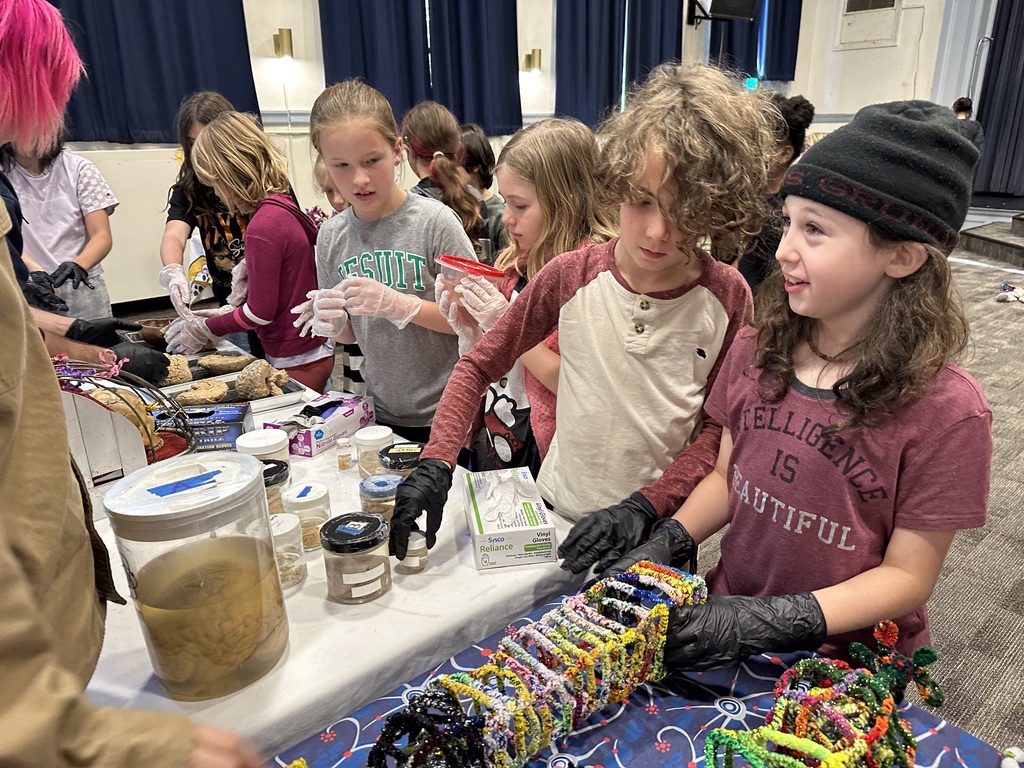
We’re always struck by the insightful questions we’re asked whenever we visit. Both Jeremy and Asa collected questions from their students, and here are the answers I’ve found! Like all good scientists, I’m open to learning more – so please dig even deeper on your own.
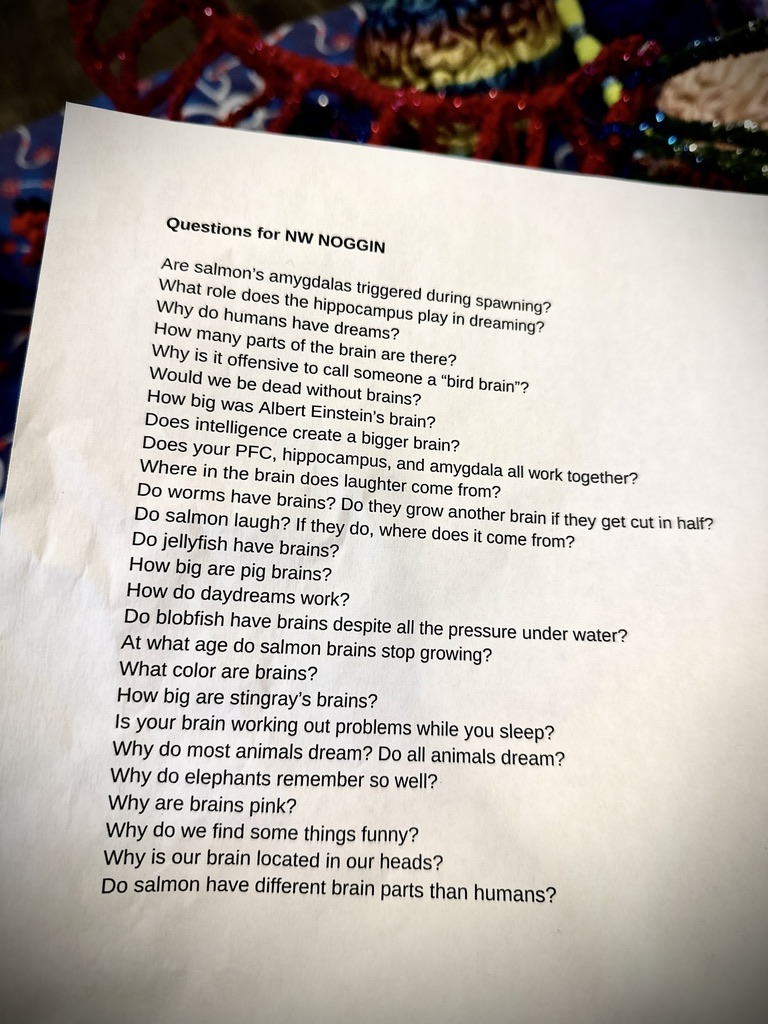
Are salmon amygdalas triggered during spawning?
Students had been exploring the life cycle of salmon, a critical species in the Pacific Northwest! And the amygdala is becoming a well-known brain region in our local public schools!

LEARN MORE: Without my amygdala, would I get scared?
Salmon don’t have amygdalas!
However they do have a part of their brain which is similar to the way an amygdala performs in human brains called the habenula. The habenula plays an important role for spawning salmon.

IMAGE SOURCE: Diversification of habenular organization and asymmetries in teleosts: Insights from the Atlantic salmon and European eel
LEARN MORE: Salmon Dissection Guide
When salmon are ready to spawn, they undergo many changes, including changes in behavior and physiology. The habenula helps process information about their environment, which can include things like the presence of predators or changes in water conditions. In spawning salmon, the habenula helps them make decisions about when and where to spawn. It can also help them respond to social cues from other salmon. So, the habenula is important for guiding salmon during this critical time, ensuring they choose safe places to lay their eggs. It helps them survive and ensure the next generation of salmon.

LEARN MORE: Role of Habenula in Social and Reproductive Behaviors in Fish: Comparison With Mammals
LEARN MORE: Habenula GPR139 is associated with fear learning in the zebrafish
WHAT ABOUT THE HABENULA IN YOU?: The habenula
At what age do salmon brains stop growing?
Salmon brains grow as they develop, but they don’t grow in the same way throughout their entire lives. Most of their brain growth happens when they are young, especially in the first year of life. After that, their brains reach a certain size as they mature, usually around the time they are ready to spawn, which can be anywhere from 2 to 7 years old, depending on the species. So, while the brain may still change a bit after they reach adulthood, the main growth happens earlier in their lives. In recent years, scientists have discovered that the more a salmon exercises, the more a salmon’s brain grows (neurogenesis)!

LEARN MORE: Athletic Atlantic salmon grow more brain cells than couch potato Atlantic salmon
LEARN MORE: An Overview of Adult Neurogenesis
Do salmon laugh? If they do, where does it come from?
Salmon don’t laugh like humans do, per se. Laughing is a complex behavior tied to emotions and social interactions, mostly seen in humans and some other mammals. While salmon do express feelings through behaviors — like jumping or splashing when they’re excited or scared — they don’t appear to have the ability to laugh as we understand it. Their brains work differently, focusing more on survival and basic needs rather than social emotions.

So, while they have their own ways of showing how they feel, laughter isn’t one of them.
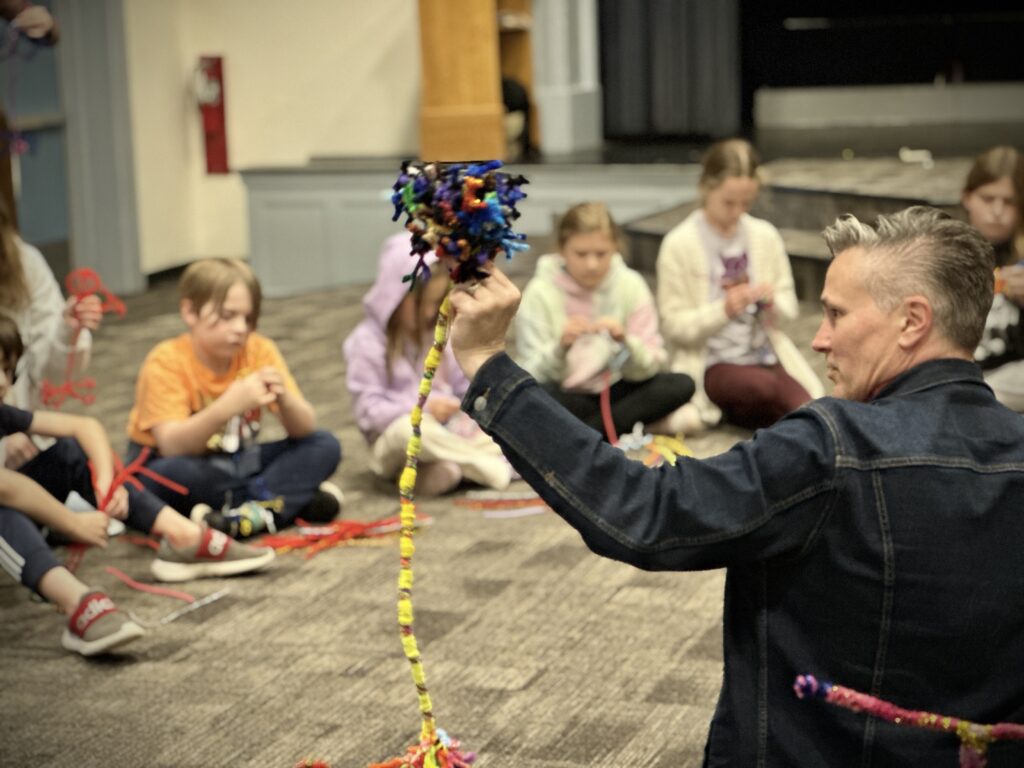
However, salmon can experience feelings that we might think of as joyful. While they don’t feel emotions the same way humans do, they do show signs of excitement and happiness. (For example, when they find food or swim in a safe area, they might exhibit energetic behaviors like jumping or swimming faster). These behaviors suggest that they have positive feelings about their environment and experiences. So, while it might not be exactly like human joy or laughter, they definitely have ways of showing that they’re enjoying themselves.
LEARN MORE: Rat tickling: A systematic review of applications, outcomes, and moderators
Learn more about which animals laugh and to hear what some animal laughter sounds like!
Do salmon have different parts in their brains than humans?
Yes, salmon have very different parts in their brains compared to humans, reflecting our different needs and lifestyles. For one thing, as noted above there is no amygdala!

While both salmon and humans have similar basic brain structures, (such as the forebrain, midbrain, and hindbrain), the specific functions and sizes of these parts can vary greatly. For example, salmon have a well-developed olfactory bulb, which helps them detect smells in the water, crucial for finding food and navigating their environment. In contrast, humans have a more developed cerebral cortex, which is involved in higher functions like reasoning, problem-solving, and complex social interactions.

Salmon also have huge optic lobes, which are analogous to some essential brainstem structures that we have known as the superior colliculi. The superior colliculi (the term means “upper” “bumps”) are a pair of gray matter bulges, or bumps, on the back (or dorsal) surface of our brainstem.
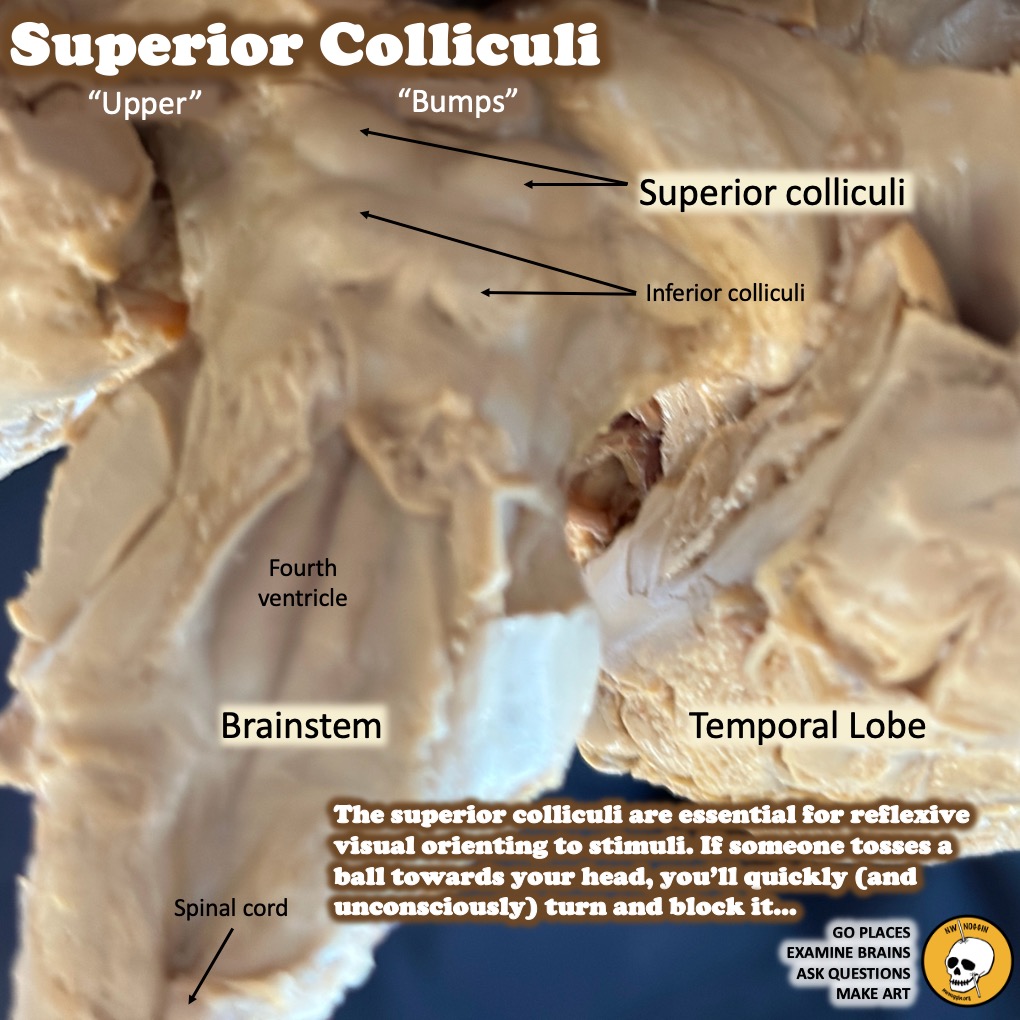
The superior colliculi help us quickly orient to sudden or novel visual stimuli. Think of salmon, swimming through challenging waters, amidst plenty of potentially dangerous, visible threats! The optic lobes in salmon serve to orient them reflexively, so they can also act quickly and survive!

IMAGE SOURCE: Science over a cuppa
LEARN MORE: What can fish brains tell us about visual perception?
Do worms have brains? Do they grow another brain if they get cut in half?
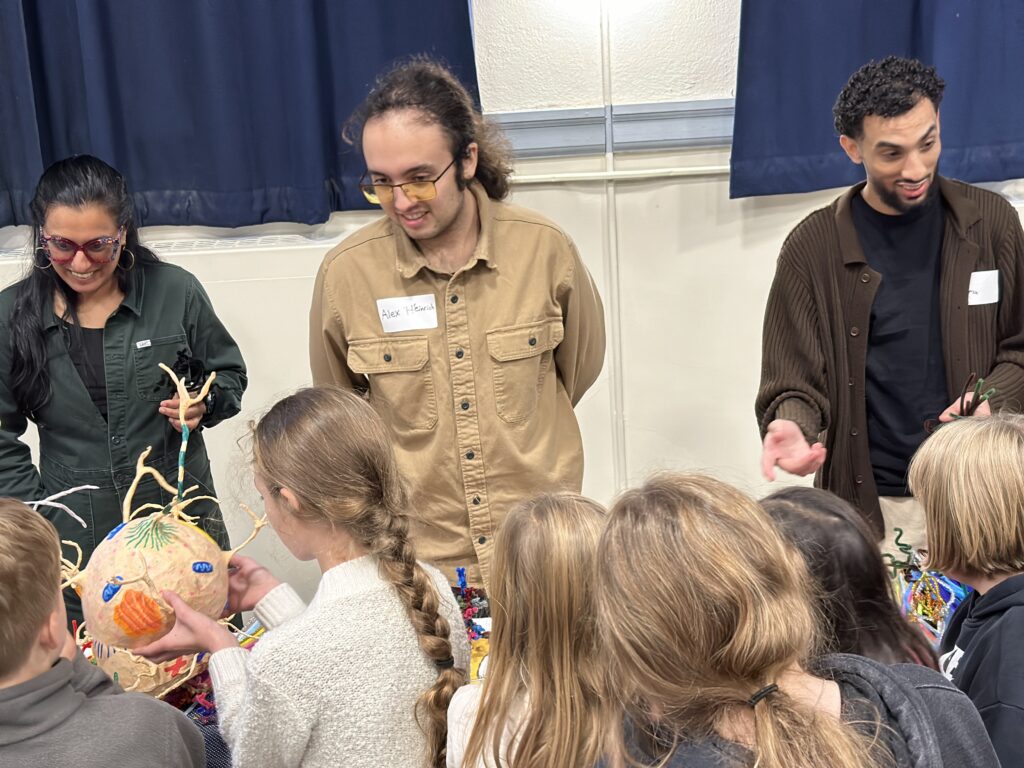
Worms don’t have complex brains like we do, but they do have a simple nervous system. They have a structure called a “ganglion” that acts like a primitive brain, helping them process information and control their movements. A worm ganglion is sort of like a traffic light at an intersection: it helps manage the flow of cars and tells them when to stop or go. In the same way, a ganglion helps control the worm’s movements and responses to its environment. It processes information from the worm’s senses and sends out signals to help it move and react, (just like the traffic light helps manage traffic).
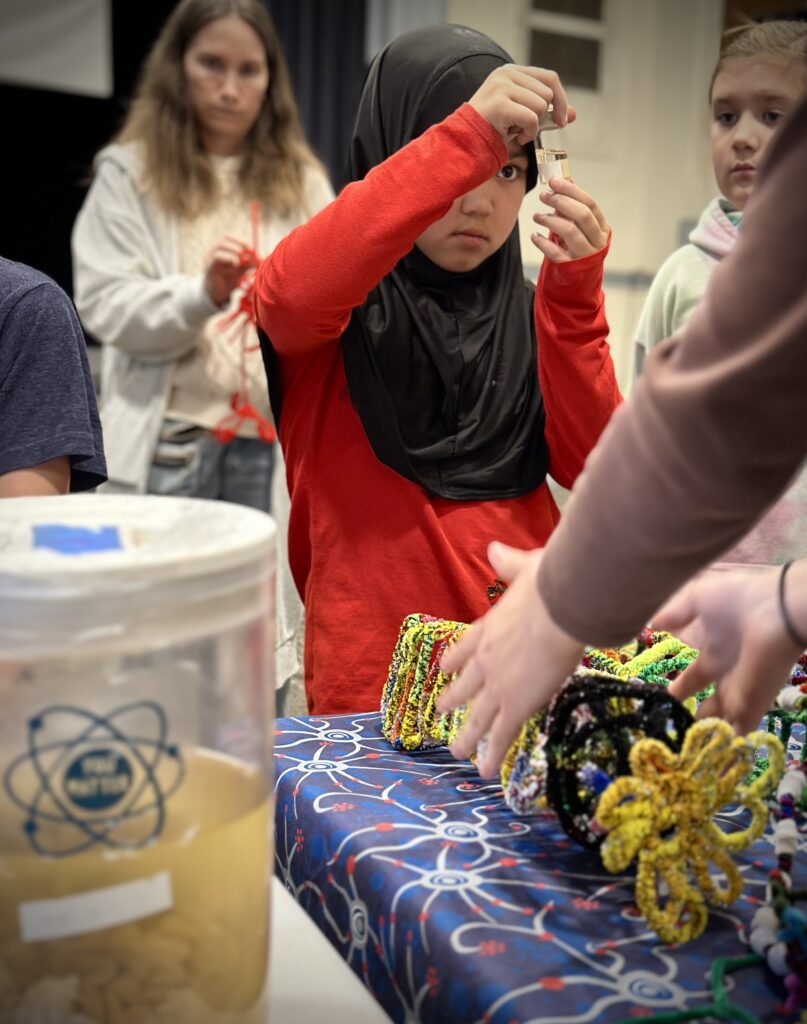
If a worm gets cut in half, whether it can grow back depends on the type of worm. Some worms, like planarians, can regenerate and grow a new head and nervous system. However, most earthworms cannot grow back a complete brain if cut in half; usually, only the front part can survive and regenerate to some extent. So, while they can heal and survive, they don’t end up with two brains.
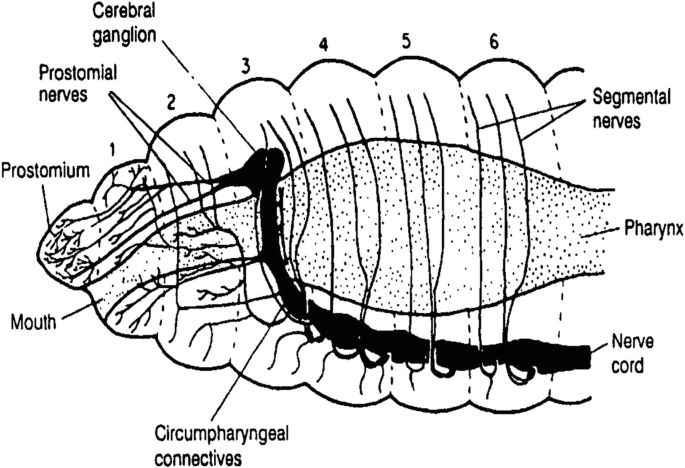
LEARN MORE: Earthworm Morphology
LEARN MORE: Controlled Information Transfer Through An In Vivo Nervous System
LEARN MORE: Studies on regeneration of central nervous system and social ability of the earthworm
LEARN MORE: The cellular and molecular basis for planarian regeneration
Do jellyfish have brains?

No, jellyfish do not have brains. Instead of a brain, they have something called a nerve net. The nerve net in jellyfish is a decentralized network of nerves spread throughout their body, allowing them to sense and react to things like touch and light. You can think of it like a group of tiny wires that connect all over their body, allowing them to sense things and move without needing a central brain. This nerve net helps them respond to their environment and control their movements, like swimming and reacting to touch.

IMAGE SOURCE: Do Jellyfish Have Brains?
A jellyfish also has clusters of sensory neurons called rhopalia on its top (a.k.a., the “bell”). Rhopalia detect light, and also gravity, ultimately helping jellyfish determine how to remain right-side up.

LEARN MORE: Rhopalia are integrated parts of the central nervous system in box jellyfish
LEARN MORE: Development of the rhopalial nervous system
Though it might seem sad that jellyfish don’t have a brain like we do, it’s actually kind of perfect for them! Not having a brain has its advantages– because it doesn’t have a central control point, so there is no information delay and jellyfish can respond quickly to their surroundings. So, while they may not have a brain, jellyfish can still function and survive quite well in their ocean habitats.

An EXCELLENT book about all things jellyfish is Spineless by author Juli Berwald!

LEARN MORE: Spineless
How big are stingray brains?
Do animals dream? Why or why not?
Why do elephants remember so well?
How big was Albert Einstein’s brain?
Why is our brain located in our head?
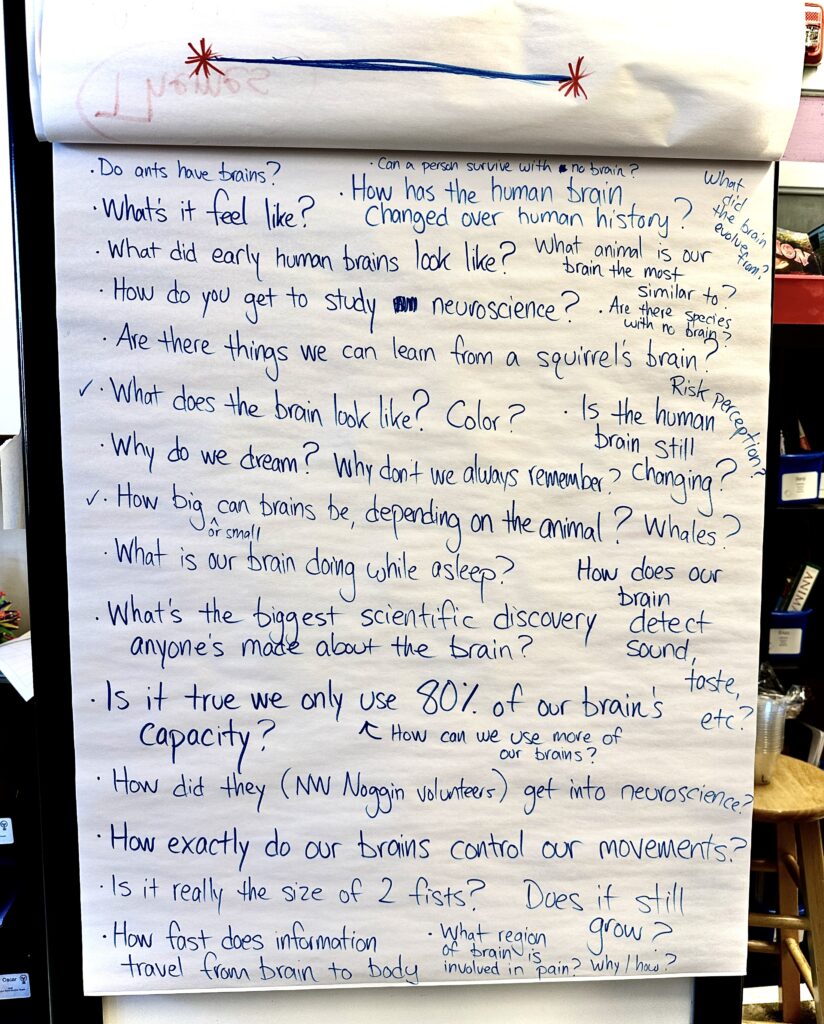
How big are pig brains?
“Due to the challenges of using rodents models, we looked to find a model whose brain more closely resembled a human brain. We choose to use a pig as our model for several key reasons. First, the human brain is only 7.5 times the size of an average pig brain. The size of the brain is important in our study because we want to be able to translate potential treatments directly to humans. Second, the human brain is gyrencephalic, meaning that outer cerebral cortex of the brain has many convolutions, while the rodent brain is lissencephalic, meaning that the outer cerebral cortex of the brain is smooth. Typically a brain that has more convolutions (i.e. gyrencephalic) is associated with higher connectivity and complexity. The pig brain is similar to humans in that it has a gyrencephalic brain again making it an easily translatable model…” LEARN MORE: Pig Model of Neural Injury
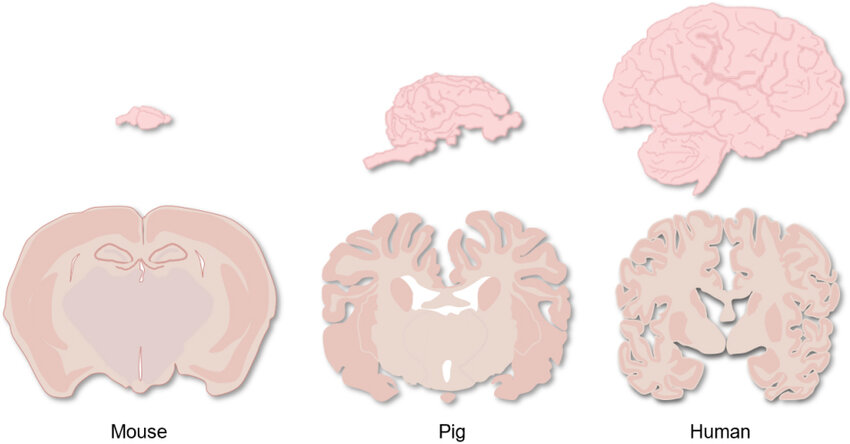
IMAGE SOURCE: Genetically engineered pig models of neurological diseases
LEARN MORE: Pig Brains Have Homologous Resting-State Networks with Human Brains
Do blobfish have brains despite being under all that pressure under water?
Yes, blobfish do have brains!

IMAGE SOURCE: Blobfish Facts
Even though they live at great depths with a lot of water pressure, blobfish have adapted to their environment very well. Their brains are relatively small but are essential for sensing their surroundings and reacting to changes. Their brains are similar to those of other fish species, with some differences. Blobfish have simpler brains and nervous systems compared to bony fish. Their bodies are mostly made of a gelatinous substance (like jello!) that allows them to float just above the ocean floor without much effort. In fact, the blobfish loves being under all that water pressure–It would hate it up top with us!
LEARN MORE: Weird & Wonderful Creatures: The Blobfish
LEARN MORE: In Defense of the Blobfish: The ‘World’s Ugliest Animal’ Is Our Fault
LEARN MORE: Who Swims with the Blobfish?: Anthropomorphic Bias in Conservation
How many parts of the brain are there?
What role does the hippocampus play in dreaming?
Why do humans have dreams?
Would we be dead without brains?
Where in the brain does laughter come from?
Do ants have brains?
What did early human brains look like?
How do you get to study neuroscience, and how did the volunteers at NW Noggin get involved?
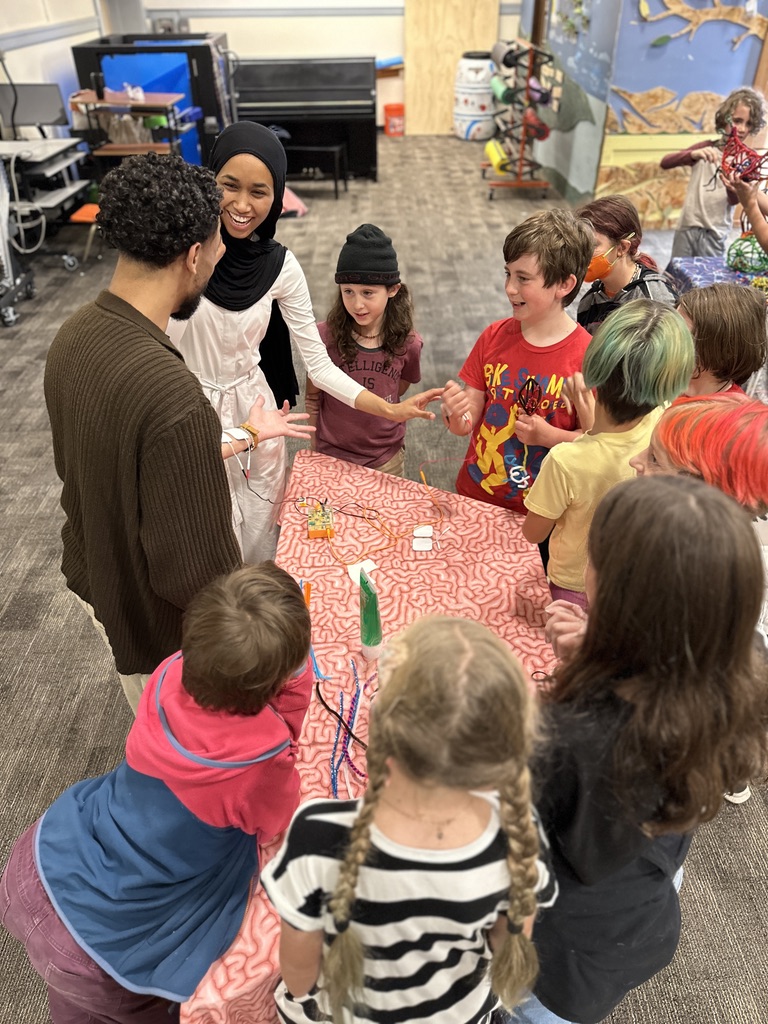
The first step to studying neuroscience is cultivating your own curiosity about the world around you, and how you perceive it. Right now that could look like reading some cool brain books, watching interesting videos about the brain on YouTube, and paying attention in science classes, particularly those in biology. Once you navigate high school, PSU has an interdisciplinary neuroscience minor that welcomes all kinds of students, and many NW Noggin volunteers find their way into the program from there.

LEARN MORE: Northwest Noggin Resources
LEARN MORE: Inspiring books on brains and art
LEARN MORE: NEUROSCIENCE IS… COOL
LEARN MORE: Neuroscience for Kids
Are there things we can learn from a squirrel’s brain?
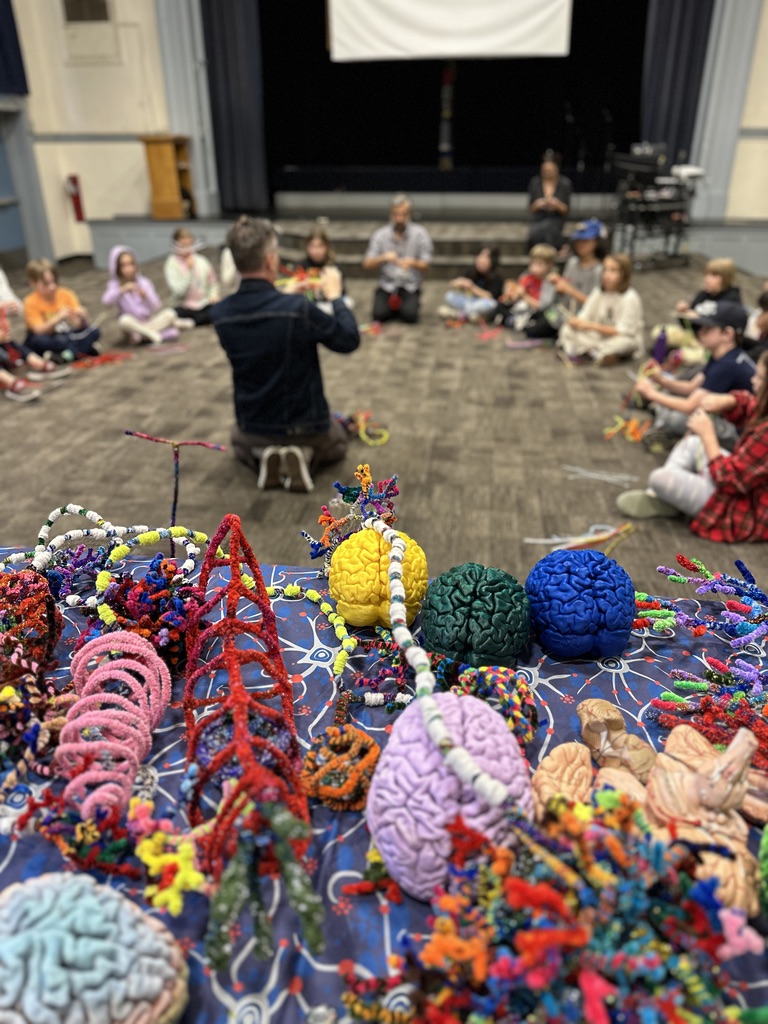
LEARN MORE: The squirrel as a rodent model of the human visual system
LEARN MORE: The impact of locomotion on the brain evolution of squirrels and close relatives
LEARN MORE: Architectonic subdivisions of neocortex in the grey squirrel
Does intelligence create a bigger brain?
Do your PFC, Amygdala, and hippocampus all work together?
How do daydreams work?
What color are brains? Why?
Is your brain working out problems while you sleep?
What is our brain doing while asleep?
While we sleep, our brain is actually very active! It processes and organizes information from the day, helping us remember things and solve problems. During sleep, especially in a stage called REM (Rapid Eye Movement) sleep, the brain also works on emotions and helps us recharge. This is when most dreaming happens.

Sleep is extremely important for overall brain health, as it helps with memory, learning, and even cleaning up waste products from brain cells. Public policies that support better sleep include later school start times for high schools and permanent standard (not daylight “savings”) time.
LEARN MORE: Noggins in Nod: The science of sleep
LEARN MORE: Permanent Standard Time is best for your brain
LEARN MORE: Brains Sweep Themselves Clean Of Toxins During Sleep
What does a brain look and feel like? Is it a specific color, why?
Is it true that we only use 80% of our brain capacity, and if so, how do we use more?
No, this is a brain myth.
Scientists now think that we use almost all parts of our brain for different functions, even when we’re at rest. Different areas are active depending on what we’re doing, like remembering, moving, or feeling. So, there’s no specific way to “use more” of our brain because we already use it fully. Instead, we can improve how we think and learn by engaging in activities like reading, playing games, going new places, listening to each other and practicing new skills. Additionally, to improve how your brain performs, it is wise to take care of it by providing it with proper sleep, exercise, and a well-balanced diet.
What region of the brain is involved in pain?
How fast does information travel from your brain to your body?
Is your brain still growing?
SO MANY GREAT QUESTIONS!!!!

HUGE THANKS to Asa and Jeremy and all their curious inquisitive students for welcoming us to Sunnyside! And thanks to all my fellow undergraduates from Portland State University – and elsewhere! – for letting knowledge really serve



